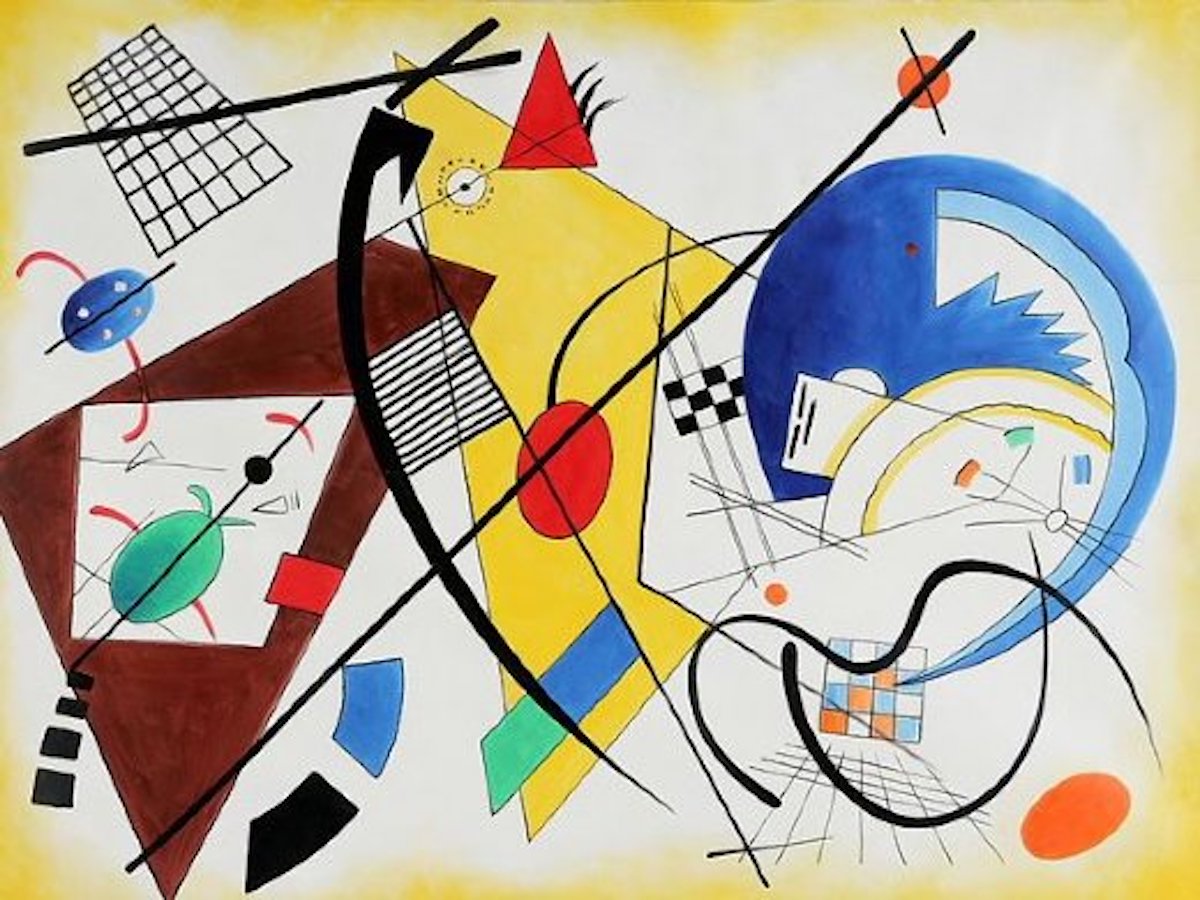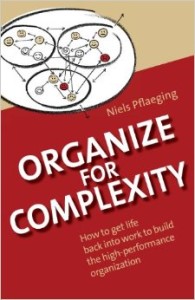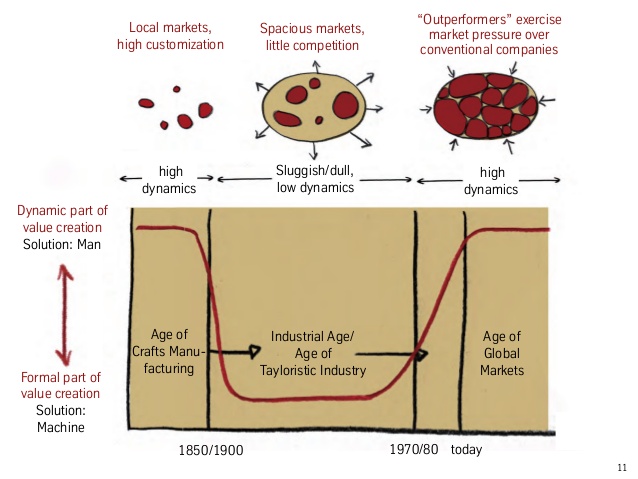
Organize For Complexity
“The only ‘thing’ capable of dealing with complexity is human beings.”
 This is the central thesis of Niels Pflaeging’s book, Organize For Complexity: How to Get Life Back into Work to Build the High-Performance Organization, and speaks to the importance of engaging people to assist the next evolution of business. As our work becomes increasingly complex, the importance of engaging the human mind goes up because the classic reductionist point-of-view, i.e. a problem is merely the sum of its constituent parts, falls apart when confronted with the levels of complexity in the market today.
This is the central thesis of Niels Pflaeging’s book, Organize For Complexity: How to Get Life Back into Work to Build the High-Performance Organization, and speaks to the importance of engaging people to assist the next evolution of business. As our work becomes increasingly complex, the importance of engaging the human mind goes up because the classic reductionist point-of-view, i.e. a problem is merely the sum of its constituent parts, falls apart when confronted with the levels of complexity in the market today.
When I first heard Niels Pflaeging speak at the Scrum Gathering Prague in 2015, I immediately could see how his message was consistent with the Agile mindset and the Spirit of Scrum; that in order to get to higher levels of performance, quality and engagement we must capture and sustain the focus of the people doing the work. In order to truly successful with Scrum and Agile, we need to take a holistic view of the entire system. But what does those concepts look like in a generic business or enterprise? This slender, easy-to-read and well-illustrated book, gives you some clues on what the future might look like and is the reason why it leads my series of book reviews documenting how we might organize ourselves in the future.
The organization of the book is pretty straight-forward. It has seven parts (or chapters) and an excellent bonus chapter, which is an extended interview of Niels called “Management is Quackery”. I highly recommend reading the interview. One of the first thing you will see when reading this book is how important the illustrations are in telling the story (see the sample diagram below). When reading it, it feels like Niels is standing at a whiteboard explaining his ideas.
Niels defines complexity as any system that has the presence and participation of humans. As living systems with the potential to change at any time, complex systems often produce surprises. It is certainly possible to have part of a complex system act in standardized way, but interactions between the part of a complex systems always remain unpredictable. As a result, complex systems cannot be controlled, but merely observed.
Throughout the Industrial Age, systems were not complex. They were merely complicated and scientific management (Taylorism) was introduced as a brilliant social technology. For all the bad press it receives in the Agile community, Taylorism was a breakthrough in human organization and become the foundation for how work was organized for the entire 20th Century. During the Industrial Age, it was possible to manage value generation by creating a hierarchy of thinkers over the doers. People higher up could make all the decisions and devise strategies, policies and procedures that later get delivered to the doers. All the workers (or machines) have to do was execute the steps and follow the commands from the higher ups. Viola! Value is generated!
 But this only worked because markets in the 20th Century were slow and sluggish. Competition was negligible or non-existent. Workers that were poorly educated and unfamiliar with industrialization, could be replaced by machines and\or were compliant. But during the 1970’s to early 1980’s, markets changed to something more dynamic and more complex. Markets became global and competition increased dramatically. Now it was no longer possible to separate the complexity from the value creation. As result of this market shift, Taylorism and scientific management became a zombie technology. Killed by the economic disruptions of the 70’s and 80’s. Management just did not know it, yet. It was dead.
But this only worked because markets in the 20th Century were slow and sluggish. Competition was negligible or non-existent. Workers that were poorly educated and unfamiliar with industrialization, could be replaced by machines and\or were compliant. But during the 1970’s to early 1980’s, markets changed to something more dynamic and more complex. Markets became global and competition increased dramatically. Now it was no longer possible to separate the complexity from the value creation. As result of this market shift, Taylorism and scientific management became a zombie technology. Killed by the economic disruptions of the 70’s and 80’s. Management just did not know it, yet. It was dead.
Niels’s book has SCORES of great insights and ideas to consider as we move deeper into the 21st Century. Since the book is mostly visual, the most compelling ideas are easy to find. I will highlight the ones that I found most useful:
- In complex systems, working on separate parts of the system is damaging to the whole.
- Problem-solving in a complex system is not “how to do it?”, but “who can do it?”.
- To improve problem-solving in a complex system, increase communication and connectivity of the parts.
- Value arrises from interactions of individuals in a complex system, so measuring individual performance is a myth.
- Ninety percent of management practices do nothing more than keep people from their work.
- The focus should remain on how to empower self-organizing teams, rather than focus on how to empower more self-organizing individuals.
- Value is generated by a network of teams in direct contact with the market.
- Decentralize decision-making away from the center to those teams in direct contact with the market.
- The culture of an organization is like its shadow, it cannot be changed; only observed.
- The modern organization is a decentralized network work of teams where individual positions cease to exist and a collection of roles becomes predominant.
- The focus of leadership work is to influence the system, the informal social structures and the value generating network.





